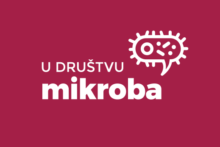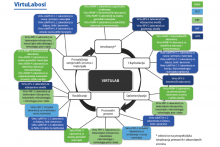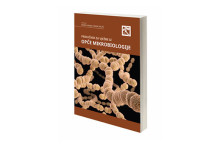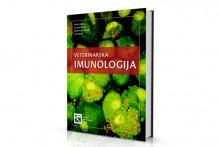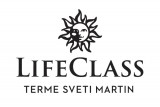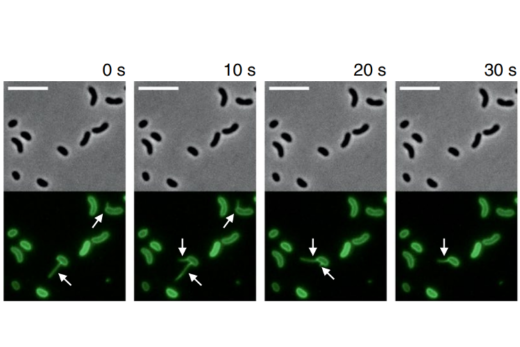
For The First Time, Scientists Have Caught Bacteria “Fishing” For DNA From Their Dead Friends
Bacteria are slippery little suckers. They evolve rapidly, developing resistance to antibiotics and therefore becoming increasingly difficult to deal with. Now, for the first time, researchers have caught on film one of the mechanisms the microbes use for this speedy evolution.
Two Vibrio cholerae bacteria – the pathogen responsible for cholera – sit under a microscope, glowing a vivid green. As we watch, a tendril snakes forth from one of the bacterium, harpooning a piece of DNA and carrying it back to its body.
That appendage is called a pili, and the process whereby the bacteria incorporates the new genetic material from a different organism into its own DNA to expedite its evolution is called horizontal gene transfer.
And this is the first time scientists have directly observed a bacterium using a pilus to effect this gene transfer; it’s a mechanism that has been hypothesised for decades.
“Horizontal gene transfer is an important way that antibiotic resistance moves between bacterial species, but the process has never been observed before, since the structures involved are so incredibly small,” said biologist Ankur Dalia of Indiana University Bloomington.
“It’s important to understand this process, since the more we understand about how bacteria share DNA, the better our chances are of thwarting it.”
Exactly how bacteria used their pili to snare DNA remained elusive, partially because of the extremely small scales involved. A pilus is over 10,000 times thinner than a human hair, which means it’s very difficult to observe.
What the team did – and the reason those bacteria glow with an eerie green light – is develop a new method of painting both the pili and the DNA with fluorescent dye. When they stuck the whole kit and kaboodle under a microscope, they were able to see the process with their own eyes for the first time.
Watch the video and read more here or read the scientific paper published in Nature Microbiology
Projekt "U Društvu mikroba"
Osnovna svrha projekta je doprinijeti uvođenju, razvoju i održivosti programa društveno korisnog učenja na fakultetima. Više o projektu
Zanimljivosti
Projekt Virtulab
VIRTULAB je virtualno umrežen znanstveno-istraživački laboratorij za primarne i sekundarne sirovine.Naša članica, prof. dr. sc. Dijana Škorić u podkistu o koronavirusu i cjepivu
Podkist je podcast Zavoda za komunikacijske i svemirske tehnologije (ZKIST) u kojem se razgovara o znanstvenim i tehnološkim temama te temama povezanim sa studiranjem i učenjem. Cilj je u opuštenoj atmosferi približiti najnovija znanstvena istraživanja široj publici, dati studentima širi pogled na to što uče te poslušati savjete starijih kolega o studiranju, radu i napredovanju u profesionalnoj karijeri.Postani član HMD-a
Cilj Društva je okupljanje mikrobiologa i stručnjaka srodnih struka s ciljem unapređenja svih grana mikrobiologije.
Skupovi HMD-a
Power of Viruses 2024
Date: 25-28 September 2024
Venue: Zadar, Croatia
We are honoured and pleased to invite you to the second international symposium “Power of Viruses 2024” to be held at the Hotel Kolovare, Zadar, Croatia, 25-28 September 2024.Ostali skupovi
Date: 23rd - 27th September 2024
Venue: Rovinj, Croatia
PCR i qPCR u mikrobiologiji i molekularnoi biologiji
Date: 7. i 8. svibnja 2024.
Venue: BICRO BIOCentar, Zagreb
Balkan Fungus 2024: The 3rd Balkan Conference on Medical Mycology and Mycotoxicology
Date: 10 - 12 October 2024
Venue: Belgrade, Serbia
FEMS Summer School for Postdocs 2024
Date: 2 - 10 September 2024
Venue: Mediterranean Institute for Life Sciences (MedILS) in Split, Croatia
Izdavaštvo
Priručnik za vježbe iz opće mikrobiologije
Ovaj sveučilišni priručnik napisalo je petnaestak autora iz desetak visokoškolskih ustanova iz Zagreba i Rijeke, a sadržaj je podijeljen u petnaest, slikama bogato ilustriranih poglavlja u kojima su opisane i obrađene različite bakteriološke, virološke, mikološke, imunološke i molekularno-biološke metode koje se upotrebljavaju u općoj mikrobiologiji koja se studira na nizu različitih fakulteta i visokih škola.
Veterinarska imunologija
Radi se o vrhunskoj literaturi za potrebe visokoškolske nastave iz veterinarske imunologije. Knjiga je svojim sadržajem namijenjena prvenstveno studentima, ali i veterinarima u praksi i nastavnicima.
(Iz recenzije)

